High moisture content can cause serious damage to a home and it constantly creeps into a home’s crawl space. High humidity is especially prevalent in coastal areas including here locally in Southeastern NC. Basically, if one lives in coastal NC or SC, crawl space moisture is a dangerous enemy to their home. Plus, it is common for extensive damage to be done before a homeowner is even aware an issue exists. Just think, how often do we see the underside of our house? Additionally, when homeowners have extra home improvement funds, it is spent on features we can see like a roof, siding, or kitchen. Things we can see. Many homeowners never inspect their crawl space unless they are buying, selling, or the floor starts buckling. That’s why we have seen many home inspections kill a sale for this very reason and often the solution is crawl space encapsulation.
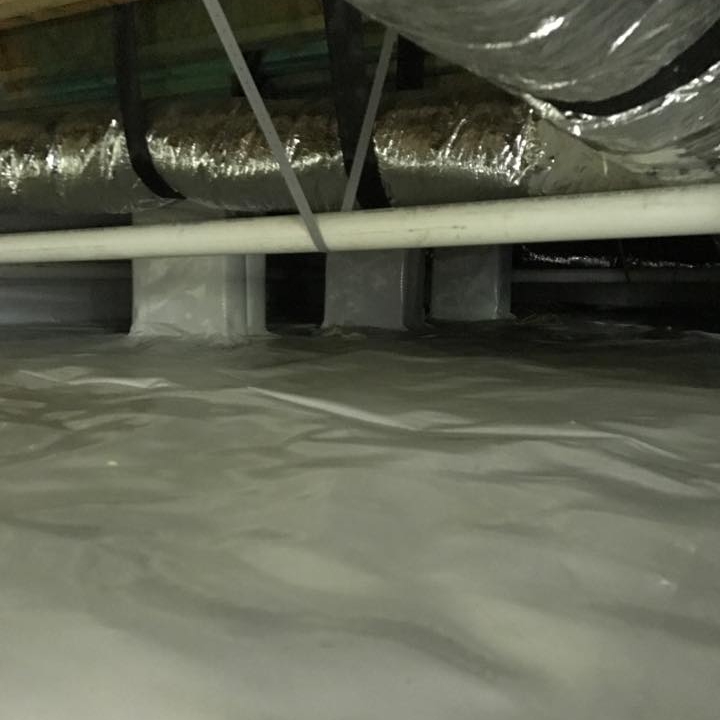
A Home Foundation is the Backbone of a House
That’s right! Although a crawl space is not seen, it is the backbone of a house. Literally, it is the foundation of the home. Like the human body needs doctors and check ups, homes have home inspections and contractors. If a person does not take care of his/her spine, it begins to erode a lifestyle and limits activities. Even back surgery may be required. A home is no different. Without a strong foundation and healthy crawl space, a home may crumble from underneath. High humidity and standing water promotes mold, termites, wood deterioration, flooring issues, and even health issues for occupants.
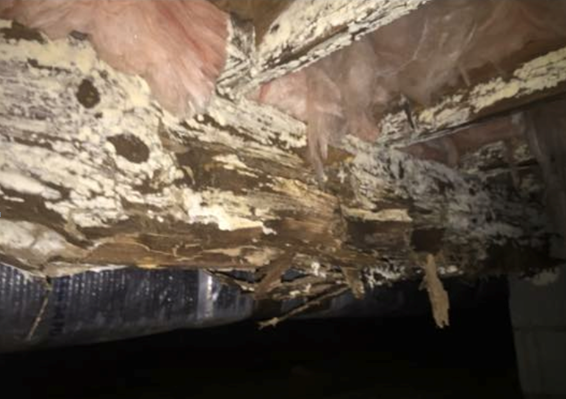
That’s why keeping an eye on a crawl space is key to the overall well-being of a house. It starts with at least a home inspection and termite inspection prior buying a home. Not only do inspectors look for damage while crawling underneath a home, they are also looking for areas that could cause future damage. Primary examples are termites and moisture. Most inspectors end up recommending a vapor barrier.
Vapor barriers are basically a sheet of thick plastic meant to limit water damage underneath a home caused by ground humidity. Barriers are made of varying materials and thickness. They range from basic contractor’s plastic (6 mil) through a true long term barrier (20 mil). Matt Batten, owner of Bone Dry Crawl Space mentions “Up to 19 gallons of water per day evaporates out of the ground in an average sized crawl space per day.”. Can you believe that? But, a vapor barrier is like wearing a small band aid to cover a larger issue.
Crawl Space Encapsulation Treats Ground Humidity
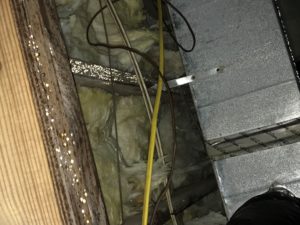
Matt Batten states “A very popular crawl space issue is ground humidity and a crawl space encapsulation or enclosure is often the solution.”. As mentioned above, often termite inspection companies lay down a plastic moisture barrier to block ground humidity. The purpose is to keep the moisture from forming mold underneath the home flooring and even inside the home. Because, mold attacks the insulation, floor joists, and sub flooring. Additionally, mold may move into the living space. Kept unchecked, structural issues develop which means big bucks.
Another huge crawl space issue happens when humid outside air meets cold from the HVAC duct work in the warmer months. Hot and cold mix to create condensation. Technically, this raises the dew point underneath a house and practically creates a home’s own wet and dangerous crawl space climate. Even homes with no duct work in the crawl space have this issue since there is still interior cool air making the floors cold.
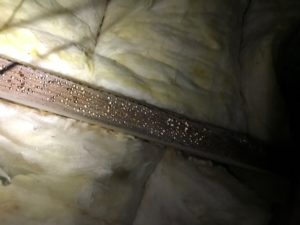
With the extreme heat and dampness in the South, humidity is everywhere! So, homeowners need to stop the humid outside air from entering the home to react with low temperatures of the AC. Have you heard how crawl space vents should be open during the summer? Matt made a great point by saying, “Why would a homeowner open vents to let in 90% humidity air?“.
Fortunately, part of the crawl space encapsulation process includes permanently sealing the crawl space vents, installing a crawl space door, and enclosing the crawl space. Batten states, “A high quality (12-20 mil) reinforced virgin polyethylene resin barrier is ideal. Antimicrobial treated resin is an option as well”. By sealing the crawl space, it drastically limits ways that moisture may enter the home foundation. Speaking in weather terms, it lowers the crawl space dew point. A simple comparison is thinking of a drinking glass full of ice and cold drink on a humid day. The way the glass sweats is what happens underneath!
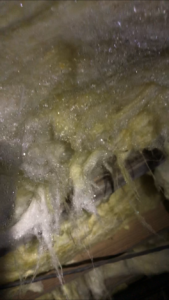
The Role of a Dehumidifier in a Crawl Space Encapsulation System
Even though the crawl space is sealed, the air within the space must be regulated. Very similar to using a HVAC system to heat and cool a home, a dehumidifier controls the humidity underneath the home. Technically, a dehumidifier works the opposite of HVAC. Rather than pumping air into an area, it pulls humidity out of the air. One can actually see the water coming from the drain line while the dehumidifier is removing moisture from the area. Dehumidifiers may be set to turn on at a certain humidity level as well.
How Do I Choose the Right Dehumidifier?
Dehumidifiers come in all types of sizes and prices. So do crawl spaces. The smaller the encapsulated crawl space, then a smaller dehumidifier could be used. Although, the larger the space, the larger the required unit. Typically, a commercial sized dehumidifier unit may be the largest single part of the total encapsulation cost. But, it is worth it. Commercial dehumidifiers are built to run often and long.
Yet, not all crawl spaces require a larger unit. Additionally, placement of the dehumidifier is key. Recently, Batten found a much too small of a unit placed just inside the crawl space door. Not only is the unit too far from much of the crawl space, it was also far away from the largest source of moisture. The solution was to install a commercial dehumidifier under the center of the house. Therefore, it serviced the crawl space area easier, plus the main HVAC trunk line was the main source of moisture.
How Much Does It Cost for Crawl Space Encapsulation?
Enclosing a crawl space is not cheap. Plus, it is hard for many to spend a decent amount of money on something rarely seen. But, remember the human spine analogy. You can’t see the spine, but you sure know when it hurts and it should be taken care of! Crawl space solution costs vary from the cheapest being a moisture barrier, then a crawl space enclosure, and up to a complete crawl space enclosure. A basic 6 mil moisture barrier may cost about $400.
Depending on the size of a crawl space, an enclosure with a commercial quality dehumidifier could cost $4000 or more. Finally, a complete encapsulation often doubles the price to $8,000 – $10,000. Again depending on the square footage of the crawl space and the level of dehumidifier needed. Condition of the insulation and debris left from other workers factor in the cost as well.
But, think of the alternative. Ignoring the crawl space could cause significant damage to the underside of the home. Remember, this supports the flooring and the whole structure! Another issue for homes built in the 1990’s and newer includes the wood quality and type of wood used. Trees are grown and harvested quicker these days. Results are an inferior wood product compared to prior generations. Therefore, the wood rots and promotes mold growth from moisture. Batten mentions a popular question, “Why didn’t grandmother’s old house have rotten joists?”. There may be other factors at play, but it could be the lower grade lumber and even the choice of tree.
Should Sellers Pay for Crawl Space Encapsulation?
Sellers always have the dilemma of what to fix and how much to spend prior to a sale. The seller’s dreaded enemies are the home inspector and the appraiser. There could be inspector required repairs which could be easily handled prior to closing. But, there could be major issues which kill a sale or even deter buyers completely. So, a seller should have a professional inspect all areas of the home for issues up-front. If there is a significant crawl space issue, consulting a crawl space encapsulation company is a good idea. As mentioned above, the level of solution varies from a vapor barrier, dehumidifier, to full encapsulation.
Should Buyers Pay for a Crawl Space Encapsulation?
Just think of everything we have talked about. Plus, a buyer typically spends $100,000, $200,000, $300,000 and more on a home. If there is a crawl space moisture issue, a crawl space encapsulation system could be a great investment in the overall health of the home. Especially in the Coastal Carolinas! Hopefully, this article has provided helpful knowledge. I can tell you that the writer of this article has first hand knowledge of mixing high humidity, coastal NC summer air with a very cool interior. We invested in a Bone Dry Crawl Space enclosure and have already had fantastic results. So, check with a professional near you.

Realtors can follow on ActiveRain or Connect on Linkedin for more news. See why service matters